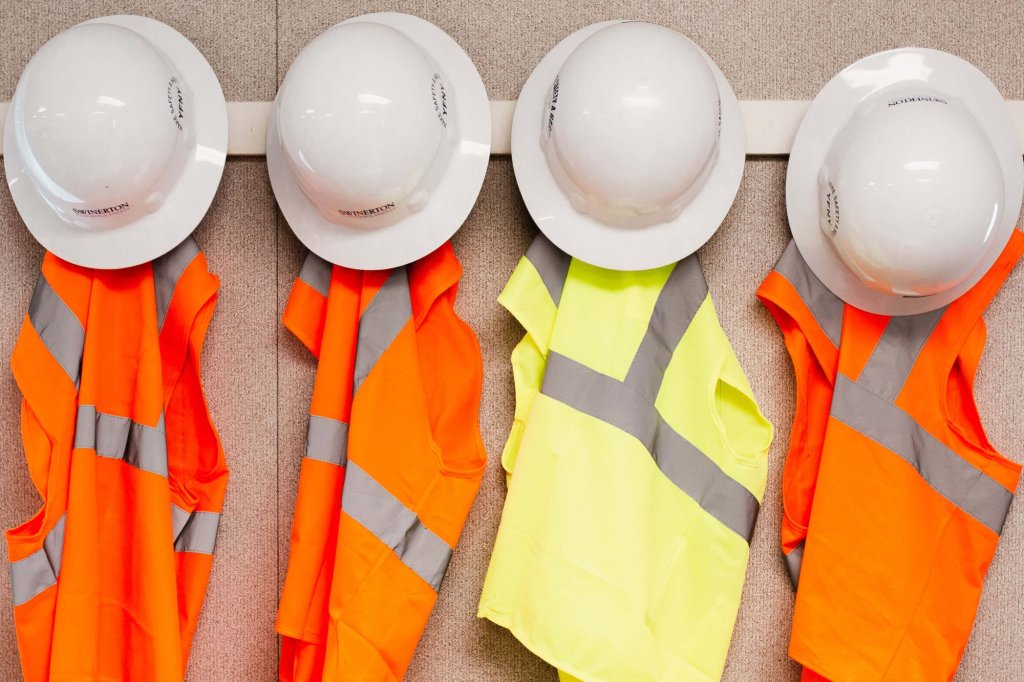First Aid Preparedness Safety Talk
It's essential that all workers possess some basic knowledge about first aid care on the jobsite. An injury or an emergency can occur at any moment, affecting you or your coworkers.
This toolbox talk covers the basic of first aid. With this knowledge, you can better assist injured parties until emergency personnel arrives and may even be able to administer aid for minor injuries yourself.
What you should know about first aid
A lot of workplaces assign specific individuals to help with first aid during an emergency. But, that person may not always be on the scene when an incident happens.
That's why it's important for every worker to learn first aid awareness and understand what they can do until the designated first aid provider or emergency services arrive.
Know the company policy
Most companies have policies or defined procedures that must be followed in the event of an emergency. There are also certain people who must be contacted as soon as possible.
Every employee should be made aware of the company's emergency policies and understand where they can access that information to prevent confusion. It is easy to panic during an emergency. When you're familiar with the proper procedures, you can stay calmer and more collected.
Know where first aid kits and supplies are located
A first aid kit and automated external defibrillator (AED) should be stored in a central location and clearly labeled. That way, these first aid tools and supplies can be accessed immediately.
When employees are unaware of the location of emergency supplies, they may spend too much valuable time searching for them during an emergency.
Know who to contact
If an injury occurs that requires medical attention, you should notify your supervisor or manager as soon as possible.
If the injured person needs emergency medical assistance, 911 should always be dialed first.
Know your location
When you contact emergency personnel, they will ask your location. Everyone in the workplace should know the physical address of the jobsite where they are currently working, and they should be able to describe their exact location onsite sufficiently.
Making sure you are aware of these details ensures that emergency personnel can reach you quickly when needed.

How to be prepared for emergencies
Employee meetings may be held to review protocol for emergency situations.
Each employee should be given the task to think about what their role would be if an emergency situation occurred.
Here are some of the points that should be considered:
Know what hazards there are in your workplace
Make yourself aware of injuries that can occur
Understand company policies for emergency scenarios, and know where to find those policies
Educate yourself on emergency response information for your job
Ask yourself what you would do in specific emergency situations
Know basic safety procedures
Know basic injury care
When injuries occur
The types of injuries you and your coworkers are most at risk for can vary widely depending on your roles and responsibilities. For example, working with a forklift on a construction site or in a warehouse job could put you at risk for heavy equipment injuries.
In construction, injuries can be minor or major, and knowing how you need to react to both is highly important. With any injury, prompt attention is the best course of action for a positive outcome.
Basic first aid
The main focus of basic first aid is not to treat the injured individual, but to help them until professional medical providers can arrive. Your goal as a first aid provider is to control the em emergency situation as best you can.
Common first aid includes applying pressure to help slow the bleeding of wounds or starting CPR if the injured person's breathing or heartbeat stops.
What you will find in a first aid kit
There are a variety of different first aid kits that may be available to you. They can range from small to large and contain a few specific items or many different tools.
There are some common items that you will find in almost all first aid kits, including:
Antiseptic solution or wipes
Antibiotic ointment
Band-aids in a variety of sizes and shapes
Sterile gauze pads in a variety of sizes
Adhesive tape
Elastic bandages
First-aid manual
Tweezers and/or scissors
Cold packs for bumps and bruises
Tylenol, Ibuprofen, Benadryl
Gloves
More comprehensive first aid kits may contain:
A blanket
Flashlight
Batteries
Protection for your mouth during CPR
Calamine lotion or hydrocortisone cream
Thermometer
Splint
Alcohol wipes
Tourniquet
Eye patches or protection
What is an AED?
Some places of work may have an AED machine available on the premises. This life saving device is becoming more prevalent on the jobsite.
The automated emergency defibrillator is a smart machine that can help when a person suffers a heart attack or the heartbeat otherwise stops.
Because use instructions are included on the device itself, it is a self-explanatory and easy to use tool. You attach the AED's electrodes to the patient and the machine will lead you through the process to administer a shock.
Workers who do not have training on an AED can still use it, although training is advised.
Find and schedule topics faster
Raken's toolbox talk app makes it easy to choose from a pre-loaded library (or upload your own), then schedule and assign topics for any project. We'd love to show you how in a demo and get you started on a free trial.